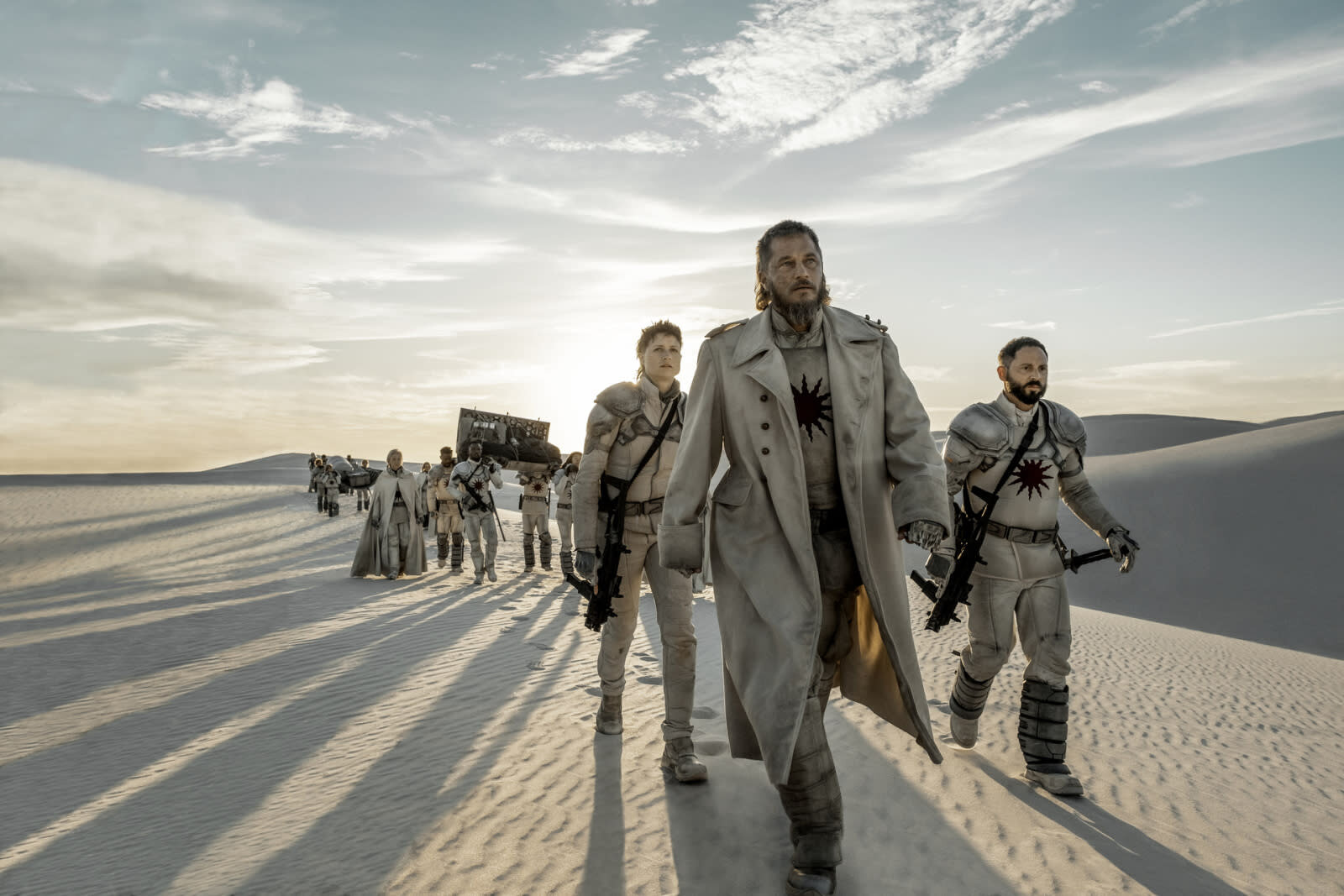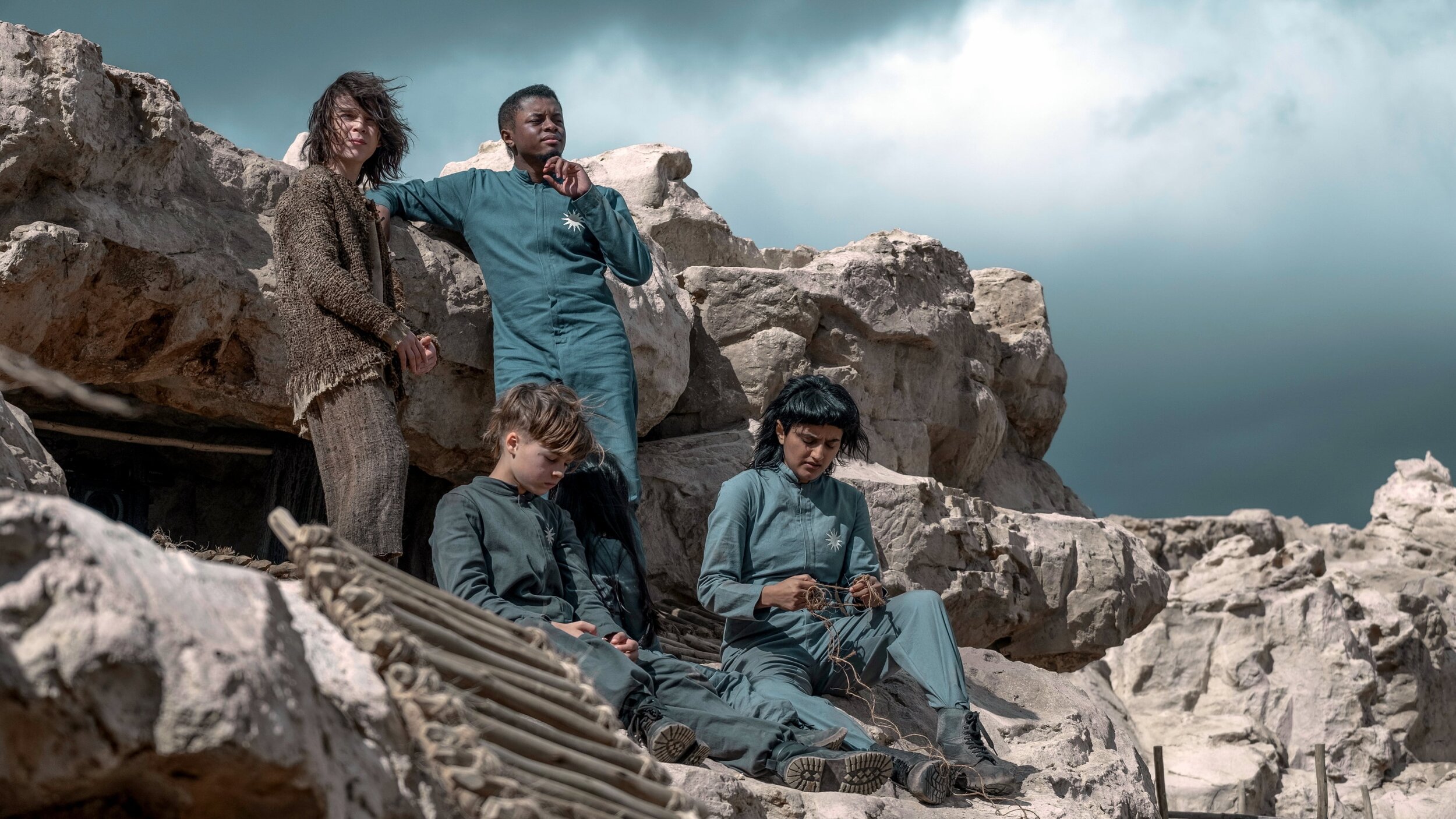Raised by Wolves Presents a New Perspective into the Futurism of Sci-fi Costume Design
2020 was a year of certain scarcities in the realm of entertainment, most pronounced by the gap of film releases in theaters due to pandemic restrictions. However, streaming services pumped up a plethora of movies and TV shows throughout the year. With HBO Max launching May 27th and Universal’s Peacock launching July 15th in the US, and Disney+ coming to Latin America on November 17th, the world of streaming services grew exponentially that year. One genre of motion picture that thrived in 2020 was sci-fi. From Amazon Prime's Tales from The Loop to Universal Peacock’s Brave New World to HBO Max’s Raised by Wolves, the release options were plentiful. But the last series was arguably the most hardcore sci-fi show of 2020, as Ridley Scott had his touch on its design and story.
Ridley Scott is credited as the executive producer and director of Raised by Wolves’ first two episodes. He is known for developing movies like Alien, Blade Runner, and The Martian. His vision regarding themes like space, androids, and futurism are so imaginative and compelling that he has created a standard for what future-related sci-fi stories should look like. Raised by Wolves follows suit, with androids as the main characters, gigantic menacing aliens as villains (prominent at the end of the first season), isolated and barren parts of Earth represented as other planets, and plot-points derived from space exploration and human conflicts with technology.
Image (Via)
The TV show follows two atheist androids, Mother and Father, sent to Kepler 22b to “apparently” revive humanity’s last remnants after a war between atheists and the Mithraic religious group ends up damaging Earth. They first raise six embryos, but only one, Campion, survives. However, as the series continues, the characters learn that the Mithraic, human followers of the monotheistic fundamentalist religion that worships sol-god Mithras, are still alive in a space ark and that humans left Earth to find a new home. From then on, the series becomes a contemplation into the relationship between belief and absolutist faith, science and religion, power and its ability to corrupt, the types of bonds that make a family, and the emotional development of artificial life.
It is from this vast new universe of possibilities Raised by Wolves creates that sets it apart from other sci-fi stories. And one of the aspects that differentiates it even more from any sci-fi story ever depicted on screen is the show’s costume design. Developing four different main types of garments, Ridley Scott and Janty Yates, the series’ award-winner costume designer, build up a stylized future by combining historical European uniforms, prehistoric clothing, and latex to represent the atheist and Mithraic, the raised embryos, and the androids, respectively.
Image (Via)
Beginning with the Mithraic and the atheist army uniforms, both combine accessories from mostly European historical attire to build an intricate design that is its own thing. For Sol’s followers, the adults are primarily dressed in a white-cream costume with a sun necklace, a golden belt, and a red sun in the center of their puffed protective vests to establish the colors and symbols of their religion. They are also stylized with four different overgarments: a cloak, a trench coat, shoulder guards, and a jacket. These pieces establish character traits and rankings inside the Mithraic societal structure. The people that wear cloaks are shown to be of religious importance as they conduct rituals and prayers. The shoulder-guards are worn by soldiers, who are also outfitted with heavy calf guards and two armaments, a gun and a close-combat weapon, all to build both a good attack and a proper defense. The jacket, which features the sun symbol in an above the heart position instead of in a central place, is only worn by the character of Mary/Sue, played by Niamh Algar, meaning that it could be an attire specific to her or it could also denote her position as a medic. And lastly, the trench coat is only seen with the main antagonist Caleb/Marcus, played by Travis Fimmel, both when he is a soldier and when he becomes the Mithraic leader in Kepler, so it denotes his personality as this intimidating man of power. And as Yates explains in an HBO Max featurette, the costumes “went through many different iterations based on Ridley’s passion for the French fireman helmets of yesteryear,” an accessory that the Mithraic wear when they enter hostile territories, so she had to adjust them to fit with the 1920s-style helmet.
The show also features another version of the Mithraic costume, one outfitted by the children and teenagers that appear later in the series. It is a sometimes blueish-grey, other times brownish-black jumpsuit with the Sol symbol in a silver color located above the heart, accessorized by the sun necklace and completed with mountain boots. Another essential trait of all Mithraic is their hair. Most haircuts consist of short mullets, undercut sides with plentiful hair in the center and back, for men and women alike. Still, some female characters have haircuts featuring plenty of hair from the midpoint to the back of the head but reduced amounts on the front area. These haircuts add to the religious aspect of the group, which not only defines their follower’s fashion but their physical traits too.
Image (Via)
Now, the atheist’s uniform is way simpler and darker than the Mithraic. From the little that has been shown, it looks like a combination between a knight’s armor and a tactical suit. Janty Yates said that “Ridley was very keen that we would maintain the look from the Middle Ages.” While the religious group wears nicely woven, fine, bright, and wooly uniforms, the atheists sport a dull, monochromatic look made of grey metal armor and form-fitted grey cloths, which change from person to person. Their clothing is not as uniform-like as the Mithraic, personalized to fit the wearer, only standardized by an armor covering their chest and shoulders, marked by a black A. Yet, one thing that unifies the atheists’ look is their face tattoos in the shape of crisscrossing lines, and their pointed helmets, which they wear in battle.
Moving on to the raised children, as mentioned before, Campion is the only survivor at the beginning of the series. However, his costume design sets him apart from all other characters since it is supposed to emulate the artisanal hand-woven attires made by nomadic groups in the past, while all other outfits are intricate and technologically advanced designs. Yates mentions that “the toughest was trying to find something that looked as if you had started in Neanderthal times.” Indeed, Campion looks to have used the elements of his surrounding (mostly plant life) to craft his garments. And they are straightforward too. He wears a straw-like, sack-like greyish-brown knitted coat over a simple knotted grey shirt with grey pants and a furry-like pair of shoes. Campion also wears a knitted scarf when it's cold. The costume design team seems to have done their research to accurately represent the early stages of human fashion, particularly through the fabrics and woven patterns department.
Image (Via)
Finally, the android clothing, particularly Mother and Father’s, is the most basic outfit of the whole series in form, but the most complex in an aesthetic sense. Their garb is entirely made of latex and is a one-piece, tight-fitted, rubber-like, shiny grey suit that goes from chest to toe and covers every part of the body. It is so artistically simple yet so creative, provoking, and trend-setting that it is, in my opinion, the most unique aspect of the entire series. The style Janty Yates fashioned is so remarkable and different that it alone makes the series iconic. She says that the creativity behind the suit may have come from the challenge of developing something that felt distinct from the movies she previously worked on like The Martian and Prometheus. She ponders in the featurette, “it’s like, where do we go now? Because we’ve made some pretty good spacesuits.” Latex was the answer, which grants Mother and Father an artificial quality that perfectly accompanies their android bodies and truncated speech patterns, but the material is also elastic, which matches their developing emotional and moral maturity throughout the series. But I believe Father actor, Abubakar Salim, sums up the costume’s appeal the best by stating, “There is a sci-fi element to the suits, but it doesn’t need all the flashy lights or anything that would say, this is a different time.” It is an unfamiliar familiarity that makes the costume captivating.
In the end, Raised by Wolves is a series that thrives on bringing new and outlandish aesthetics and ideas to the silver screen, ones that also feel very familiar because of Ridley Scott’s iconic style. The show’s costume department is arguably the most fascinating and creative aspect of the series because it blends designs and concepts from the past with fashion influences of the present to build a future of fashion that seems plausible yet remarkable in its own way without the need for technological integration.
So, if you want to watch Raised by Wolves now, check it out on HBO Max. HBO renewed the series for Season 2, so if you enjoyed it, you can expect more from this future world coming soon.
Cover Image Via










